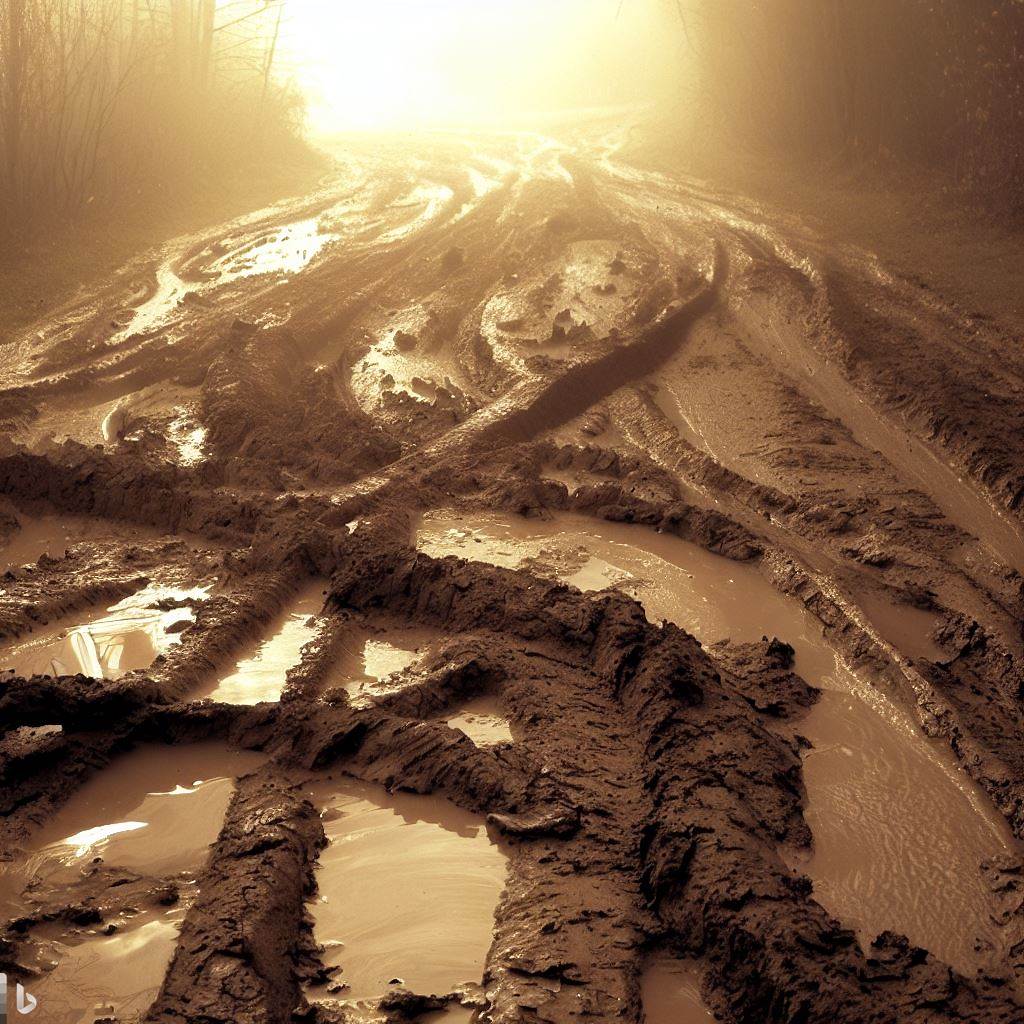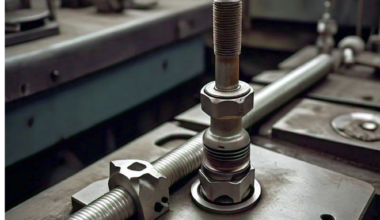As raindrops dance upon our windows, the unfortunate fate of our driveways unfolds. The picturesque path turns into treacherous terrain, devouring shoes and engulfing car tires. Familiar with that sinking feeling?
Explore effective muddy driveway solutions to rescue your space from the soggy abyss and reclaim a clean, firm footing.
It feels like a muddy nightmare you just can’t wake up from. But fret not, I’m here with some super practical solutions guaranteed to save your day – and driveway.

We’ll explore gravel reinforcements, permeable pavers, and the trusty old French drain among others; certain techniques sure to arm wrestle even the meanest of muds into submission. The battle against boggy driveways is one we can win people! Let’s get right into it.
I. Assessing the Scale of Muddy Driveway Problem
When faced with a muddy driveway, it’s essential to assess the scope of the problem before implementing any solutions.
Determine how severe the mud situation is – whether it’s just a small area or extends throughout your entire driveway. This assessment will help you choose the most appropriate solution for eliminating mud on your path.
II. Choosing the Right Gravel for Muddy Driveways
Gravel driveways are susceptible to becoming muddy, but selecting the right type of gravel can significantly reduce this issue.
Opt for larger-sized gravel as it provides better drainage and stability compared to fine-grained materials. Coarse aggregates like crushed stone or pea gravel work well in preventing excessive mud accumulation.
III. How to Install a Geotextile Layer to Prevent Mud
To create an extra layer of protection against muddy driveways, consider installing geotextile fabric beneath your gravel surface.
Geotextile acts as a barrier that prevents soil movement while allowing water drainage through its porous structure. Simply lay it down over your compacted base before adding gravel on top.
IV. The Process of Adding and Spreading Gravel on Muddy Driveways
Once you’ve selected the appropriate gravel and prepared the ground with geotextile fabric (if desired), it’s time to add and spread the new material onto your driveway surface.
Start by dumping piles of gravel at regular intervals along your path, then use a rake or shovel to evenly distribute it across all areas needing coverage.
V. Importance of Regular Maintenance for Gravel Driveways
Maintaining a clean and functional driveway involves periodic maintenance tasks that prevent recurring mud issues.
Check regularly for potholes, ruts, or areas where gravel may have been displaced. Fill these areas with additional gravel and compact them to ensure a smooth surface that discourages mud accumulation.
VI. The Role of Proper Drainage in Preventing a Muddy Driveway
One of the most critical factors in keeping your driveway mud-free is proper drainage. Consider installing trench drains along the edges of your driveway to collect excess water and direct it away from the path.
This can significantly reduce muddy conditions caused by inadequate water runoff.
VII. Alternatives to Gravel: Using Concrete or Asphalt Surface for Driveways
If you’re tired of dealing with a perpetually muddy gravel driveway, upgrading to a concrete or asphalt surface might be an ideal solution. Both options offer improved drainage capabilities and are less prone to developing mud issues.
While they may require an initial investment, their long-term durability will save you time and effort in maintaining a clean drive.
VIII. Eco-Friendly Driveway Materials
For those looking for more environmentally friendly solutions, there are several eco-friendly materials available for driveways.
Consider using permeable pavers made from recycled materials that allow rainwater to permeate through instead of creating muddy puddles on the surface.
IX. Cost-Effective Muddy Driveway Solutions
If budget is a concern, don’t fret! There are cost-effective ways to address your muddy driveway problem without breaking the bank.
Implement some DIY improvement techniques such as regular grading or adding extra layers of gravel when necessary. These simple measures can go a long way in maintaining drivability and preventing excessive mud accumulation.
X. Mud-Free Parking Surfaces: Best Types of Gravel for Muddy Driveways
When it comes specifically to choosing the best types of gravel for achieving completely mud-free parking surfaces, opt for crushed stone grades like CA6 or CA11.
These coarse aggregates are known for their excellent drainage properties, ensuring that water flows freely through the gravel layer and prevents mud from forming.

Conclusion
A muddy driveway can be a frustrating problem to deal with, but there are numerous solutions available to keep your path clean and functional.
Assess the scale of the issue, choose appropriate gravel, consider installing geotextile fabric, spread gravel evenly, conduct regular maintenance tasks, and ensure proper drainage through trench drains or upgraded surfaces like concrete or asphalt.
Additionally, explore eco-friendly options and cost-effective measures while selecting the best types of gravel for achieving a mud-free parking surface. By implementing these top 10 ways to combat muddy driveways efficiently, you’ll enjoy hassle-free access to your home year-round!
FAQs On Muddy Driveway Solutions
Q: What are some ways to fix a muddy driveway?
A: There are several options to fix a muddy driveway. One solution is to use permeable pavers, which allow water to soak through them and prevent the formation of mud. Another option is to install a drainage ditch to redirect excess water away from your driveway. You can also use lime or cat litter to absorb moisture and harden the surface. Lastly, adding new gravel or patching any holes can help improve the functionality of your driveway.
Q: How can I solve the problem of a muddy driveway?
A: If you’re a homeowner dealing with a muddy driveway, there are a few ways to solve the problem. One option is to spread lime over the muddy areas, as the lime will react with moisture and harden the soil. Another solution is to use cat litter to absorb the excess moisture and prevent mud from forming. Additionally, you can consider paving your driveway with permeable pavers, which allow water to drain through and keep the surface dry and functional.
Q: What is the best solution for a muddy driveway?
A: The best solution for a muddy driveway depends on your specific needs and preferences. If you’re looking for a permanent fix, installing permeable pavers or filling in any gaps with gravel can provide a long-lasting solution. On the other hand, if you’re searching for a quick and inexpensive fix, using lime or cat litter to absorb moisture and improve the driveway’s surface may be the best option for you.
Q: How can I fix my muddy driveway?
A: Fixing a muddy driveway can be done by taking several steps. One option is to spread lime over the muddy areas and combine it with dirt and sand to create a hard surface. Another approach is to use geotextile cloth to prevent the soil from mixing with the gravel or permeable pavers. Additionally, you can dig a drainage ditch to redirect excess water away from the driveway and prevent mud from forming.
Q: How do I repair a hole in my muddy driveway?
A: Repairing a hole in a muddy driveway can be done by following these steps. First, remove any loose dirt or gravel from the hole. Next, fill the hole with a mixture of quicklime and hydrated lime to create a solid base. Then, add a layer of gravel and compact it down to ensure stability. Finally, sprinkle lime over the patched area to prevent the spread of mud and encourage the flow of water.
Q: Can I fix my muddy driveway by combining lime with dirt?
A: Yes, combining lime with dirt can help fix a muddy driveway. Lime has the ability to absorb excess moisture and harden the soil, making it a great option for improving the surface of a muddy driveway. By mixing lime with dirt and sand, you can create a solid and durable base that could end your muddy driveway woes.
Q: How can I prevent the formation of mud holes in my driveway?
A: To prevent mud holes from forming in your driveway, there are a few strategies you can try. First, make sure your driveway has proper drainage by installing a drainage ditch or using permeable pavers. This will allow water to run off and prevent it from pooling on the surface. Second, fill in any gaps or cracks in your driveway with gravel or a mixture of dirt and water to prevent potholes and ruts from forming. Lastly, spreading lime over the surface can help harden it and reduce the likelihood of mud holes.
Q: How can I make my driveway less muddy?
A: If you have a grass or dirt driveway that gets muddy, there are a few ways to make it less muddy. One option is to pave the driveway with gravel, as this will provide a solid and durable surface that doesn’t get as muddy. Another approach is to combine lime with dirt and sand to harden the surface and prevent mud from forming. Additionally, you can consider installing permeable pavers that allow water to seep through and keep the surface drier.
Q: What is the purpose of geotextile cloth in driveway repair?
A: Geotextile cloth, also known as landscaping fabric, is often used in driveway repair to prevent the soil from mixing with the gravel or permeable pavers. By placing a layer of geotextile cloth over the soil before adding the gravel or pavers, you create a barrier that allows water to drain through but keeps the two materials separate. This helps maintain the stability and functionality of the driveway.
Q: How can I stop the spread of excess mud on my driveway?
A: To stop the spread of excess mud on your driveway, there are a few measures you can take. First, you can sprinkle lime over the muddy areas, as lime absorbs moisture and helps harden the soil. This will prevent the mud from spreading and making a mess. Additionally, you can consider adding more gravel to the surface to create a solid base that discourages the formation of mud.


